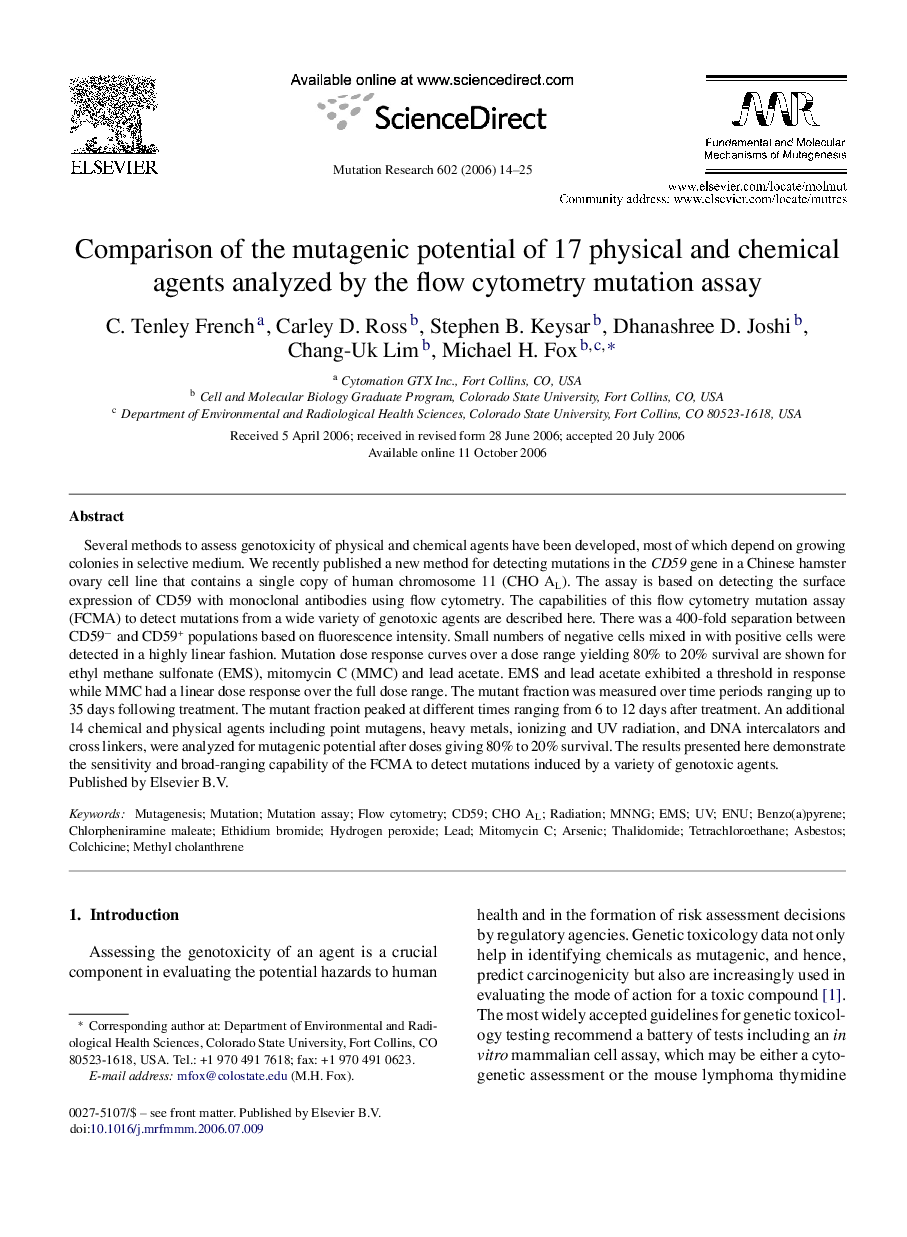| Article ID | Journal | Published Year | Pages | File Type |
|---|---|---|---|---|
| 2147397 | Mutation Research/Fundamental and Molecular Mechanisms of Mutagenesis | 2006 | 12 Pages |
Abstract
Several methods to assess genotoxicity of physical and chemical agents have been developed, most of which depend on growing colonies in selective medium. We recently published a new method for detecting mutations in the CD59 gene in a Chinese hamster ovary cell line that contains a single copy of human chromosome 11 (CHO AL). The assay is based on detecting the surface expression of CD59 with monoclonal antibodies using flow cytometry. The capabilities of this flow cytometry mutation assay (FCMA) to detect mutations from a wide variety of genotoxic agents are described here. There was a 400-fold separation between CD59â and CD59+ populations based on fluorescence intensity. Small numbers of negative cells mixed in with positive cells were detected in a highly linear fashion. Mutation dose response curves over a dose range yielding 80% to 20% survival are shown for ethyl methane sulfonate (EMS), mitomycin C (MMC) and lead acetate. EMS and lead acetate exhibited a threshold in response while MMC had a linear dose response over the full dose range. The mutant fraction was measured over time periods ranging up to 35 days following treatment. The mutant fraction peaked at different times ranging from 6 to 12 days after treatment. An additional 14 chemical and physical agents including point mutagens, heavy metals, ionizing and UV radiation, and DNA intercalators and cross linkers, were analyzed for mutagenic potential after doses giving 80% to 20% survival. The results presented here demonstrate the sensitivity and broad-ranging capability of the FCMA to detect mutations induced by a variety of genotoxic agents.
Keywords
Related Topics
Life Sciences
Biochemistry, Genetics and Molecular Biology
Cancer Research
Authors
C. Tenley French, Carley D. Ross, Stephen B. Keysar, Dhanashree D. Joshi, Chang-Uk Lim, Michael H. Fox,
